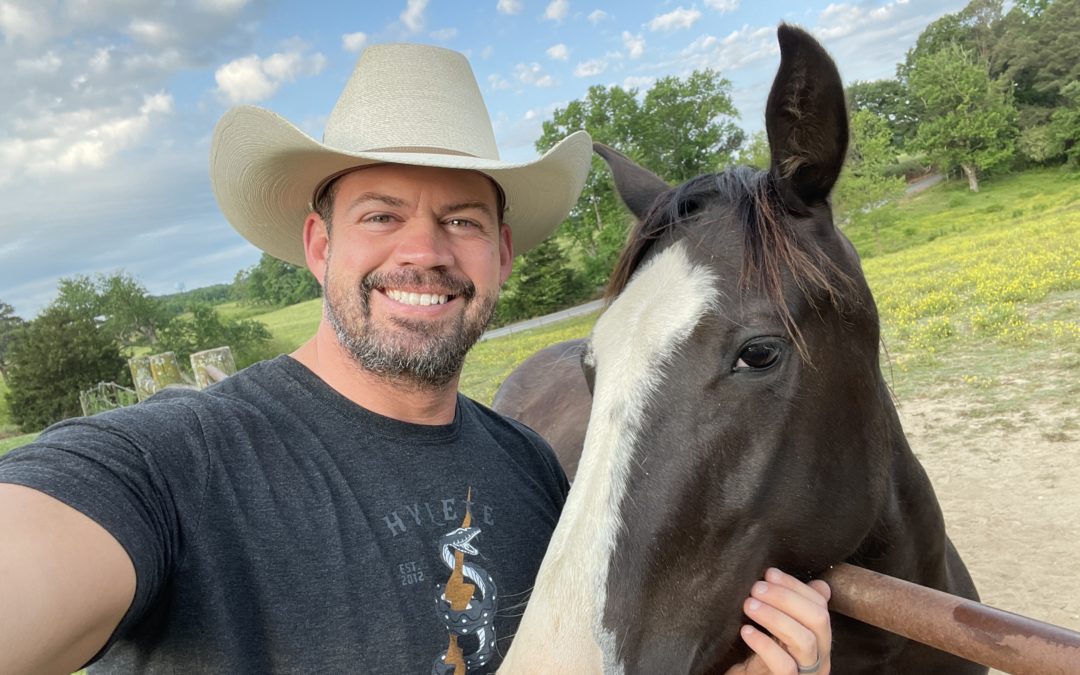Creating and Maintaining Impersonal Safeguards for Healthy Human Interactions
Working with horses has taught me a few things about exercising control of my emotions. You may not know this, but horses want to please you. They want to follow commands, obey, and live in harmony with their human. In many ways, building a relationship with a horse is no different than building a relationship with any subordinate that you’re tasking throughout the normal course of your day.
Want to skip ahead? Click here for 3 skills to help navigate tough situations.
As leaders, we have to exercise perfect control of our emotions in all situations. Like horses, those who work with and for us can pick up on subtleties in mood, temperament, and attitude towards the future. This is why some of the greatest leaders of all time, like Winston Churchill, are known for being able to give hope and a sense of security when there is very little reason to have either.
Healthy leaders lead in spite of their emotions
Have you ever been kicked by a horse? It’s no fun, and it happened to me just this afternoon while working our horses’ feet. For a bit of backstory, Moonshine is a beautiful thoroughbred we rescued from being left alone for over 4 years out in a pasture with all sorts of junk and debris to get hurt on. Fortunately, there was a natural water source and the pasture was almost large enough to provide grass year round for him to eat.
When we got Moonshine, he was emaciated. Our pasture grass was just coming in really thick for the spring, and we were actually afraid that the condition of the grass alone would make him fonder (a sickness that can be fatal to horses caused from too much sugar in their diet).
I’ve worked with Moonshine for months. I’ve spent time walking him and loving on him, and over time, as he’s gained weight, I’ve even added some grain to his diet. Over the past few weeks, he’s had some nasty calluses come up just above his hoof on his lower leg. After a consult with our Vet, we were instructed to try and knock the calluses off as they dried out.
Yesterday, when I was giving him a little grain, I used the bottom of my boot to try and knock the dried out spots off his leg. He pulled back a bit at first and I could tell that he didn’t like it, but trying to follow Doc’s order, I did it again. He raised up his rear leg and slowly kicked out while he backed up. He was telling me, “Hey! That really hurts!” So, I quit.
Today, when I went to catch him in the pasture, he turned to walk away and kicked out at me. This time, he connected. It hurt, and I didn’t like it. What would you do in this situation?
My natural response is fight. While I got agitated toward him, he did not do anything to merit a discipline action. He was only doing what he thought to prevent the pain he felt yesterday.
In that moment, the situation required that I back off of Moonshine and give him some space to know that he’s safe. A couple of hours later, I walked to the fence where I usually go to feed Moonshine – but I did not go with feed.
He came to the fence, and we had a moment. I petted him a bit and let him smell the same halter I had in my hand as earlier. He hung around for a few minutes, and we both stood there.
I want a relationship with my horse. I care about him very much. It hurt me a bit when he demonstrated that he felt threatened by me. I don’t want that. When I approached him later today, it was to build our trust back of one another.
Healthy leaders lead through their emotions. Is there a subordinate or colleague in your circles who has felt threatened of put off by you? Have they lashed out at you or tried to close ranks on you? How have you behaved towards them?
The amygdala responds roughly 100 times more rapidly than our left prefrontal cortex, where our executive function comes from. As executives, we must operate with our higher brain.
There are several methods and activities one can use to exercise control over emotions. Three that I like to use are box-breathing, power posing, and healthy self-talk. For more on these, click here.
Healthy leaders always take the time to process, to respond to situations. We never react. Healthy leaders know that a reaction is usually out of our emotions and emotions cannot be trusted. My encouragement to you is to learn the resiliency skill building activities taught in the video mentioned above and employ them daily as a part of your plan to set your triggers!
